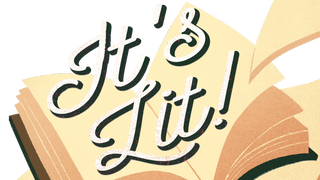
Last Tuesday, there were several ways you could have spent your 7 pm hour in the Eastern Standard Time Zone—including, but not limited to, witnessing an embattled president categorically lower a standard he’d set in public tantrum-throwing. But in a kinder, gentler section of the internet that evening, positivity and light abounded as Misty Copeland chatted about her new children’s book, Bunheads, with Ramunda Young, co-owner of Mahogany Books in Washington, D.C. For the entire hour, little Black girls blitzed the real-time comments to declare love for their dance hero; easily one of the best parts of the virtual discussion.
“You are who I think I should be when I grow up,” gushed one fan.
“I want to be a dancer. What advice do you have for me?” asked a ballet student.
“I love you, Misty!” another girl wrote with about 10 exclamation points and five heart emojis.
Copeland beamed, answering each question posed by Young and her audience with characteristic grace and enthusiasm. That’s why she wrote Bunheads, she says—to push back against disparaging stereotypes about the cutthroat, competitive dance world with her own story about the beauty and diversity that so many children are exposed to when they participate in the art of movement. The book and its characters are based on her own personal experiences as a young girl in ballet.
“Black girls come out of the womb singing and stretching our bodies dancing, so that’s what we should be doing. It’s important to own your individuality and accept your beautiful differences as your strengths,” said Copeland, the first Black principal dancer at the American Ballet Theatre. “I’ve developed such incredible relationships throughout my journey, people I grew up with like Catalina, who was a young Mexican-American girl. She’s in the book. We had a shared admiration for dance, and I really wanted to celebrate that and showcase actual people in my life.”
Bunheads is the New York Times-bestselling ballet icon’s fourth published book and second children’s book following Firebird, which earned the 2015 Coretta Scott King Illustrator Award. Writing has always been another artistic expression for Copeland but in the volatility of the pandemic, it’s provided a creative outlet while dance performances have been indefinitely on hold. Her husband, attorney Olu Evans, co-conceptualized the idea of a story about a group of very different young dancers united by their love of ballet. They commissioned Ghanaian artist Setor Fiadzigbey to create the visuals.
“Whenever my publisher would send his illustrations to me to give my feedback, I wouldn’t have anything to say and they would be like ‘crickets.’ But I was like, ‘they’re perfect. I don’t have anything to say,’” she laughed. “It’s so rare that you find someone to collaborate with who gets it. Setor worked from the words I was sharing with him and brought them to life in illustrations—and he’d never even drawn a dancer before. He had this entire package of comic book superheroes that were geared towards boys and I said, ‘that’s what I want’ because ballet dancers are superheroes to me. There’s so much strength and character and power in them.”
Copeland is planning to build on Bunheads’ storytelling about her very first day of her very first dance class and her audition for Coppélia to kick off more picture books in a series about her early adventures in ballet. She was also intentional about creating an opportunity to teach readers technical terms. “I love that you incorporated the names of the dances throughout the book, so there’s an educational component for people who aren’t dancers,” Young told her. Although Copeland’s target audience is children between the ages of 5–8 years old, her message stretches beyond the babies: “find the courage to try something new” is a call to action for parents, teachers, students, aunties, uncles, cousins and ‘em trying to live out the creative fullness of their best Black selves.
Source link
 Black America Breaking News for the African American Community
Black America Breaking News for the African American Community
